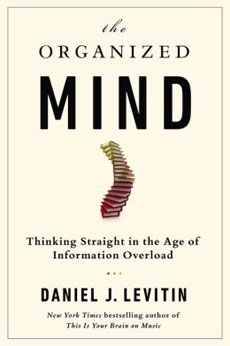"To many people, being organized means 'a place for everything and everything in its place.' This is an important principle for organizing files, tools, objects in the home and office, and so on. But it's equally important for our organizational systems and infrastructure to allow for fuzzy categories, for things that fall through the cracks — the miscellaneous folder in your filing system, the junk drawer in your kitchen. As Doug Merrill says, organization gives us the freedom to be a bit disorganized. A typical American kitchen junk drawer holds pens, matches, slips of paper, maybe a hammer, chopsticks, a tape measure, picture hooks. There are certain design constraints at work that legitimize a catchall drawer: You're not going to redesign the kitchen just to have a small drawer or cubby for chopsticks and another for matches. The junk drawer is a place where things collect until you have time to organize them, or because there is no better place for them. Sometimes what looks like a mess may not have to be physically reorganized at all, if you can slow down and observe the organization in the thicket of details.
"As I've emphasized throughout this book, the most fundamental principle of organization, the one that is most critical to keeping us from forgetting or losing things, is this: Shift the burden of organizing from our brains to the external world. If we can take some or all of the process out of our brains and put it into the physical world, we are less likely to make mistakes. But the organized mind enables you to do much more than merely avoid mistakes. It enables you to do things and go places you might not otherwise imagine. Externalizing information doesn't always involve writing it down or encoding it in some external medium. Often it has already been done for you. You just have to know how to read the signs.
"Take the numbering of the U.S. Interstate Highway System. On the surface, it may look like a mess, but in fact it's a highly organized system. It was initiated by President Dwight D. Eisenhower and construction began in 1956. Today, it comprises nearly 50,000 miles of roadway. The numbering of interstate highways follows a set of simple rules. If you know the rules, it is easier to figure out where you are (and harder to get lost) because the rules off-load information from your memory and put it into a system that is out-there-in-the-world. In other words, you don't need to memorize a set of seemingly arbitrary facts such as Highway 5 runs north-south or Highway 20 runs east-west in the southern part of the country. Instead, you learn a set of rules that applies to all the numbers, and then the highway numbers themselves tell you how they run."
